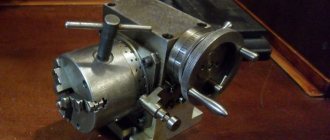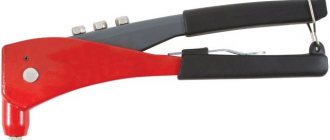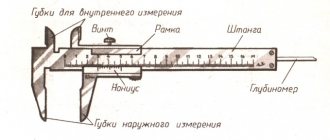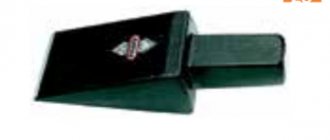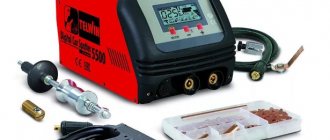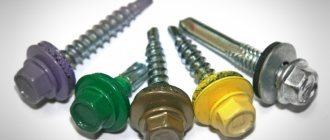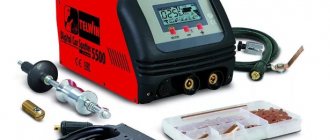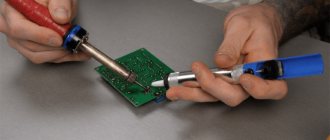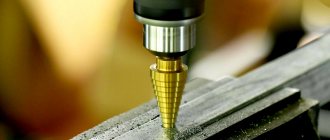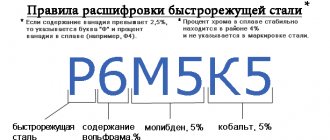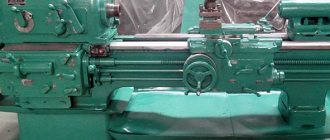DIY dividing disk - Metals, equipment, instructions
Increasing the functionality of production equipment is possible after installing a dividing head. It is necessary for the production of complex parts and workpieces. This component is often included by default. If it is missing, it is necessary to correctly select the optimal model.
Purpose of the dividing head
To form a part of the desired shape, it may need to be offset relative to the axis of the machine. This can be done using a dividing head. It can be either a separate part of the structure or its component.
The component is mounted on the equipment frame. It has various options for fixing the product, which depend on the type of attachment. The position is adjusted using several handles and a dial. The latter has holes that fix the position of the dividing component.
A similar tool may be needed to perform the following processes:
- milling grooves on the surface. This does not require great precision. It is important to control the depth and width of the workpiece;
- formation of edges on parts. This is true for non-standard nuts, tools, and shanks. The operation requires high precision;
- milling splines and grooves. This often requires significant displacements of the workpiece. Therefore, you should choose a dividing disk model with a minimum error rate.
To increase the speed of work, the part should not be constantly dismantled. Changing its position relative to the machine cutter occurs using the tool described above. Particularly difficult is the formation of helical grooves. This operation can only be performed using an accurate model.
Before purchasing a dividing head for a specific type of equipment, you must check its compatibility with the machine. Any independent alteration of the installation part may affect the quality of the product.
Types of dividing head
Multi-function dividing head
Considering the specifics of the application, you should familiarize yourself in detail with the types and general classification of dividing heads. They are mandatory for universal milling machines. The configuration of horizontal milling machines is carried out only when it is necessary to perform complex work.
First of all, you need to decide on the types of work performed on the machine. Particular attention is paid to the accuracy of their implementation. The next parameter is the complexity and accuracy of setting up the equipment for operation. Depending on these factors, you can select models with high accuracy and acceptable error rates. In some cases, such a device is made independently.
There is the following classification of milling dividing heads:
- simple. A special feature is its simple setup and ease of control. The main component is the spindle, on which the workpiece is attached on one side, and the second is connected to a special disk (limbo). The surface of the latter has holes (from 2 to 24). With their help, the part is shifted relative to the milling axis;
- combined. Control occurs using a handle. The greater the number of clicks, the greater the distance between the central axis of the workpiece and the cutting tool. Used for the manufacture of complex parts;
- universal. They are a complex technological complex, the adjustment of which is carried out both using the switching number of the handle and during the movement of the disk itself. This is done by a system of gears. This type of DG is called differential.
It is also recommended that you familiarize yourself with the accepted labeling. It will help you determine the optimal model and find out its parameters. As an example, we can consider the decoding of the name UDG-40-D250:
- UDG. This device designation is Universal Dividing Head;
- 40 – gear ratio value. It shows how many turns of the handle the spindle will rotate 360°;
- D250 is the maximum permissible size of the workpiece being processed.
UDG class models are most often used to form complex edges and surfaces. They are made to order or are components of universal milling machines.
Rarely encountered optical types are marked ODG-5, where 5 is the price of one division in seconds.
Technical characteristics of UDG
| Head | UDG 400 | UDG 320 | UDG 250 | UDG 160 | UDG 125 |
| Workpiece diameter, mm | 400 | 320 | 250 | 160 | 125 |
| Worm pair | 1 in 40 | 1 in 40 | 1 in 40 | 1 in 40 | 1 in 40 |
| Diameter of replacement wheels | 32 x f9 | 32 x f9 | 20 x f9 | 20 x f9 | 20 x f9 |
| Spindle diameter, mm | 38,2 | 38,2 | 26,5 | 14,9 | 20,2 |
| Dial division price | 15 | 15 | 15 | 15 | 15 |
| Chuck diameter, mm | 200 | 160 | 160 | 100 | 125 |
| Key width, mm | 22 | 18 | 18 | 12 | 14 |
| Weight, kg | 106 | 101 | 536,6 | 25 | 28 |
UDG 400 UDG 320 UDG 250 UDG 160 UDG 125
Calculation table of divisions
| Division parts | Number of revolutions | Counted holes | Total holes |
| 2 | 20 | — | — |
| 3 | 13 | 11 | 33 |
| 4 | 13 | 9 | 39 |
| 5 | 13 | 13 | 39 |
| 6 | 19 | — | — |
| 7 | 8 | — | — |
| 8 | 6 | 22 | 33 |
| 9 | 6 | 20 | 30 |
| 10 | 6 | 26 | 39 |
| 11 | 5 | 35 | 49 |
| 12 | 5 | 15 | 21 |
| 13 | 5 | — | — |
| 14 | 4 | 24 | 54 |
| 15 | 4 | — | — |
| 16 | 3 | 10 | 30 |
| 17 | 3 | 3 | 39 |
| 18 | 2 | 42 | 49 |
| 19 | 2 | 18 | 21 |
| 20 | 2 | 22 | 33 |
| 21 | 2 | 20 | 30 |
| 22 | 2 | 28 | 39 |
Self-production
Homemade dividing head
One of the disadvantages of factory models is their high cost. Therefore, to perform simple operations, a homemade structure is made. For practical implementation, certain components will be required.
First of all, you will need a worm gearbox. You can pick it up from used machines or grind it yourself. It is also necessary to use a lathe chuck (optimal diameter 65 mm) and a dial. The latter can be taken from old drawing drawing boards. To limit processing, it is recommended to install a locking screw.
Before you start making parts, you need to configure the divider. To do this, you can take any standard part and carve any shape. After comparing it with a similar one, additional adjustment is performed.
DIY dividing disk
The dividing head is a device for periodically rotating the workpiece for subsequent fixation of its surface in the processing zone at the calculated angle.
The production of gears, giving parts flat, shaped and other configurations with the required accuracy, is carried out by milling blanks that are periodically shifted relative to the processing axis.
Kinds
The operating functions of the devices are:
- securing the workpiece;
- its periodic rotation and fixation.
The purposes of the structural elements of different types of installations are the same and consist of:
- metal case;
- rotating part of the head;
- clamping mechanism and division fixation.
The completeness of the scope of tasks is determined by the design elements and there are three types:
- simplified (or direct division);
- universal dividing head;
- optical head.
Simplified dividing heads
Direct division. They have a design of low complexity and are used in the manufacture of standard parts in large quantities: milling slots, grooves, splines and edges of parts. No experience or skills in operation and maintenance are required.
Universal dividing heads (UDG)
The device (UDG) is intended for the production of parts that require a larger division limit than in simplified mechanisms. Selected according to the size of the milling machine. For example: with a table width of 400 mm, UDG-D320 is used. The index (D320) means that the diameter of the part cannot exceed 320 mm.
UDG models are common in industry:
- D160 and D200 with workpiece diameters up to 160 and 200 mm, respectively.
- D250 – for processing massive parts with a diameter of up to 250 mm.
- D320 – workpiece diameter up to 320 mm. With a set of replacement gears and two guitars for them.
- D400 – Dividing disk with a number of holes from 16 to 31, on the one hand, and from 33 to 54, on the other.
Optical dividing heads
In demand when processing cutting tools with a large number of blades. A glass disc with 360° graduation is mounted on the spindle. Visually, using the eyepiece, the angle of rotation is set with the required accuracy.
By rotating the flywheel on the worm wheel shaft, the spindle is rotated. Coupled with the worm wheel, it rotates at the calculated angle and is fixed with a handle located on the housing panel.
Models equipped with a screen make it easier to apply divisions and markings to the workpiece, as well as check the correctness of previously applied hatches.
Benefits of using UDG
Indispensable for the processing of massive parts by tool, repair and restoration and experimental shops in the conditions of piece production. Application in mass or serial production is costly and, often, technologically not justified.
The device allows:
- milling of surface grooves and edges of any complexity;
- with ensuring accuracy, create edges on workpieces, on nuts with non-standard parameters, on the shanks of cutting tools;
- cut grooves, splines and polyhedrons;
- mill sprockets, as well as hollows between wheel teeth.
How to use?
With the direct division method:
- The worm pair is disengaged by the control handle.
- The dial stop lock is released.
- The spindle rotates by an angle measured by the vernier dial and is fixed.
With a simple division method:
- The dividing disk is fixed in one position.
- By installing the locking handle into the hole on the dividing disk,
- The device moves to the calculated angle.
Differential division method:
- The spindle is set to a horizontal position.
- The smooth rotation of the gears is checked.
- The disc stopper is disabled.
- Further actions are the same as in the simple division method.
Which one is better to choose?
When choosing, the conditions that dictate the selection criteria are considered:
- Parameters of the head and fastening elements on the frame.
- What kind of work do you need a head for:
- for piece repairs or restoration - you need an UDG;
- for high-precision – optical head;
- for flow operation – a head of a simplified design.
Value for money. Cost recovery. New or used. Selecting the country and brand of the manufacturer.
Approximate cost, used
In October 2022, the price of new heads was announced in the range of 40,000–45,000 rubles. UDG diameter 400 mm – 133,000 rub. Used Soviet-made heads, but not used (usually in warehouse storage) - 35,000 rubles. They can be purchased at a relatively reasonable price. Prices for used ones are one and a half to two times cheaper.
Main characteristics and markings
The main parameter of the equipment is its gear ratio, the inverse value of the gear ratio of the worm pair in the structure. The designation of the device indicates its type, gear ratio and maximum diameter of the workpiece being processed. Thus, UDG-40-D320 means: a universal head with a gear ratio of 40 and a maximum diameter of the workpiece of 320 mm. A simplified designation without a gear ratio is often used, for example UDG-320.
The main parameters of the head are:
- Maximum workpiece diameter.
- Height of rigging centers.
- The angle of rotation of the spindle from the horizontal position down and up from the center line.
- The gear ratio of the pair determines the number of revolutions of the handle when setting for a full revolution of the disk.
- Heaviest load.
- Dimensions.
You should also take into account the diameter of the mounting flange for connection to the machine spindle, the number of the Morse cone for fastening in the spindle hole and other passport data.
To ensure the required processing accuracy, pay attention to the parameters specified in the device passport:
- radial runout of the spindle cone (at the base and at a distance of 300 mm from the front);
- Diameter runout;
- deviation of the axis of the supporting surface from a right angle, etc.
Universal dividing head for lathe and milling machine: how to make it yourself
Turning and milling equipment is designed to carry out work related to the mechanical removal of metal from a workpiece to give it the required shape and size. To perform some work, additional equipment is required, for example, a universal dividing head installed on milling equipment.
Today it is found quite often, as it allows the processing of complex surfaces. As a rule, the rotary head for a milling machine is manufactured and installed at the time of release of the equipment itself, since it is quite difficult to select the most suitable type of equipment. Let's take a closer look at this device.
Device classification
The dividing head for a milling machine, the table of technical parameters determines what kind of work can be carried out on this or that equipment. Considering the classification of the dividing head, we note the following types of device.
- Simple model. Its distinctive features include light weight and ease of control. part of the structure is represented by a spindle, which is connected to a disk limb.
- Combined model. This version can be adjusted with a special handle. By increasing the number of clicks, you can increase the distance between the center axis of the workpiece being processed and the installed cutting tool.
- Universal samples represented by complex models. In this case, adjustment is carried out using a disk element and a handle. The complexity of the design is determined by the presence of differential gears.
Repairing almost every design option is complicated, since you need to know the principle of operation and carry out the manufacture of all parts.
DIY making
The cost of such equipment can be quite high. This is why many people wonder how to make a dividing disk with their own hands. A drawing of the future product is created depending on the characteristics of the equipment on which the dividing head will be installed. In addition, you will need the following components.
- Lathe chuck with dial.
- Limit screw.
- A worm gearbox, which can be obtained by dismantling old machines or made with your own hands.
After manufacturing the product, the dividing part is adjusted. To do this, you can use any previously manufactured part. After obtaining certain results, a final calibration is performed, which can significantly improve the processing accuracy.
The immediate process of setting up an element can be described as follows.
- The transformation of 360 degrees of the disk is carried out by the required number of divisions, due to which sectors are allocated.
- The calculated value of the sine of the angle is displayed.
- The disk is set according to the result obtained. It is important to maintain high precision when installing the equipment in question.
- The body is fixed using a special mechanism or handle.
After this, you can install the main working part of the tool.
Industrial dividing heads can cost more than 100,000 rubles. Homemade devices cost about 40-50 thousand rubles, but have comparatively less versatility, reliability, and accuracy in use. As previously noted, it is important to consider proper installation.
Workpiece division methods
There are several methods for dividing the workpiece. With direct or direct division, the workpiece is rotated without the use of auxiliary mechanisms. On the UDG, a frontal dividing disk is used for this. With simple division, a stationary disk is used, and the installation itself is carried out by rotation through the handle using a side disk.
You can learn more about division methods using the video below.
The setting data is shown in the table below.
Division is also possible in a combined way, in which the head rotates relative to a stationary disk. And the disk itself, together with the handle, rotates relative to the pin of the rear fastening element.
If it is impossible to carry out direct division or its low accuracy, other methods are used, in particular differential tuning. In this technique, the required position of the spindle is obtained by the sum of the rotation of the handle relative to the index disk, as well as the rotation of the disk itself. The latter is rotated forcibly through toothed gears. For this purpose, UDGs are equipped with a set of replaceable gears. The differential tuning data is shown in the table below.
Continuous division is used for machining helical and spiral grooves. For this purpose, a mechanical connection is used between the head spindle and the longitudinal feed screw of the milling machine.
DIY dividing heads
The functionality of a milling machine can be significantly increased by using special equipment called a dividing head.
It is used in the production of complex parts, as it allows the workpiece to be rotated by a certain degree, which is set by the machine operator.
When purchasing a lathe or milling machine, you can count on the equipment being included. In some cases, you can do it yourself.
Homemade dividing head
